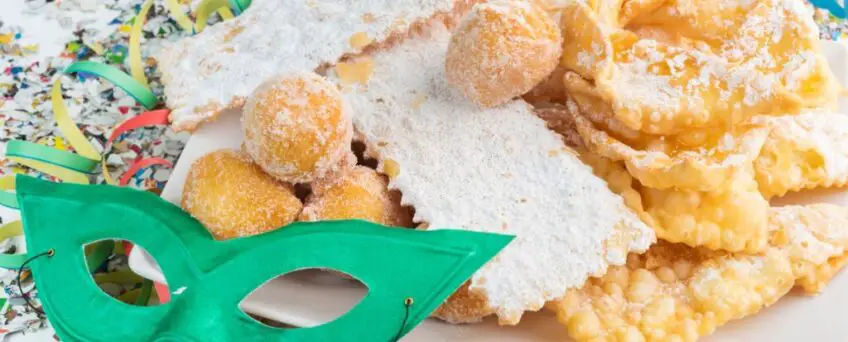History & Origin Of The Italian Carnival
The tradition of Carnival in Italy has very ancient roots; over the years, several festivals have arisen that celebrate it, which are famous worldwide.
Today we’re going to take a look at the most interesting and particular traditions, and obviously, the typical sweets that represent one of these most awaited festivals of the year. With its old rite of masks and confetti, Carnival prints smile on the colorful faces of adults and children in every Italian region, bringing particular religious traditions and rituals with it.
Origins and traditions
From the Latin “carnem levare” the historical origin of these holidays is, in fact, linked to the Christian imperative which required abstaining from eating meat in the following period between the beginning of Lent and Easter.
Carnival already existed in ancient Rome and it is, in fact, on this occasion that the Saturnalia was celebrated, pagan ceremonies in honor of the God Saturn, who, according to the belief of the time, would have propitiated the beginning of the year agricultural.
During these festivities class differences no longer existed. Nobles and plebeians were at the same level thanks to masks worn for defensive purposes against the diabolical powers.
Even in the Middle Ages, then, to precede the period of abstinence and purification that culminates on Holy Thursday, cheerful celebrations and customs were created that tell of large banquets, large quantities of food, few rules, and lots of revelries.
The highlight of the festival was the killing of a puppet, which represented the scapegoat for the evils of the past year and a good omen for the new one.
Today, Carnival celebrations are spread all over the world and are celebrated through parades of allegorical floats, propitiatory rites, and above all masked parties.
Italy boasts the presence of some of the most beautiful and famous Carnivals in the world. Among the most widespread carnival traditions is the “Carnival Process” which we still find in many Italian regions today. After the testament of the Carnival, which is blamed for all the evils of the old year, it is usually used to “sentence” him to death. The killing takes place either by hanging or beheading and is the highlight of the drama and festivities. Death can also occur by means of fire with the burning of the Carnival puppet that we find in many places in Italy.
Carnival sweets
Because Carnival precedes the period of abstinence and fasting of Lent, Shrove Tuesday is celebrated by feasting on lasagna, desserts, and other hearty dishes.
In Italy, each region boasts its own typical gastronomical recipes, but it will be with desserts in particular that these days of celebration will be celebrated. Each city has its own traditions, the important thing is that each dessert is fried and prepared at home.
Chiacchiere, castagnole, fried sweets, and black pudding are just some of the delicacies that are eaten at Carnival, to fill up on calories before the fast arrives.
Like any tradition that evolves and spreads over time, the celebrations are accompanied by typical sweets that are also cheerful and lively and represent the Carnival period.
The Carnival tradition in Italy is linked to fried sweets, one above all the Chiacchiere which take on different definitions based on the geographical origin, for example, Grostoli in Friuli, Sfrappole in Emilia, Galani in Veneto, Frappe in the Marche, Cenci in Tuscany, Talk in Campania. To these are added the Cicerchiata in Central Italy, the Struffoli in the south, and Castagnole typical of Friulian gastronomy.
Frittole, frappe, frittelle, castagnole, bugie, chiacchiere, or zeppole, whatever the name given to these fried desserts, together with the masks, are the protagonists of the Carnival in Italy as well as gastronomic testimony of the transgression period that Carnival represents.

With these we tickle the palate while with the masks we are transformed, we play at becoming something else to exorcise the period of Christian abstinence that we are about to experience. And for those who have distanced themselves from these religious origins, this celebration remains a moment of fun and joy to go back to childhood and experience a colorful and light moment.


